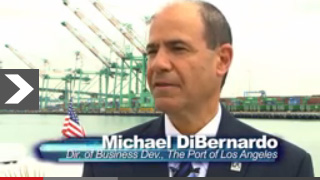
Metropolitan Transport Information System
by Digital Geographic Research Corporation
30+ years innovating
- HOME
- PRODUCTS & SERVICES
- RESOURCES
News & Commentary News & Press Reports Light Technical Geography 80-20 (nuggets for adults) Geography Kids' Hangout Technical METRIS Publications GIS Publications Associated projects NCRST VITAL
- ABOUT

Port Performance Solutions: Truck Turn Time from GPS
The era of mega-vessels is here, and it's straining port performance around the world. Goods worth tens of millions languish on the piers, and profits leak from truck drivers and motor carriers, terminal operators, BCOs and ports. Neighboring communities suffer air quality and health problems.

TURN TIME RESOURCES
What's at the root of such costly delays: infrastructure, operational capacity limits, labor unrest, or broader policies such as fees? Is an appointment system effective? What impact is a construction project having on traffic circulation? Could the port be de-congested by better management of empty containers?
Addressing these issues requires (a) top quality data, (b) top quality analysis, (c) honest, inclusive discussion.
Here's what sets us apart.
1. The Best Data
We re-designed GPS instruments for trucks, to poll a position every few seconds — 10× the next best density in the business, at a lower cost. Accurate, dense, rich data gives us a coherent trace of a truck’s path. We can often see exactly when a truck backed up to hitch a chassis.
METRIS re-animations of real GPS data (~15 MB downloads):
Movie not working? Direct link | WMV format
2. The Best Turn Time Analysis
Turn time math is tough! Knowledgeable analysts say the problem is too difficult to automate. Other analysts have had their measurements shown to be wrong.
We’ve been at the leading edge of digital geographic science for 30+ years. We designed custom data models and algorithms to detect errors. Our results are accurate every time. Accurate results reveal patterns, that indicate where the problems lie and where they don't lie, and point to the right solutions. You want that confidence in your decision making.
Because turn time analysis is about more than settling he-said she-said quarrels. It's about diagnosing bottlenecks, discovering how things work, and indicating where productivity can be improved. Several articles at this web site, focused on the ports of Los Angeles-Long Beach, illustrate our strategic approach:
- Diagnosing Performance: three easy fixes to improve turn time
- Meltdown or Summer Heat? (extensively cited by the Journal of Commerce in their 2014-11-24 magazine edition cover package), and
- Slow Gains: after the near-lockout that paralyzed the ports in winter 2014-2015
- In the Doldrums? several months after the parallel crises of 2014-2015
- Not My Problem? shows that terminals and truckers both suffer when turn time is long
- Volume is the Best Predictor: shows that terminals with more traffic are much more likely to have slow turn times
3. Constructive Dialog and Consensus

Is it conceivable to have motor carriers and marine terminals, ports and BCOs sit in a room and all agree not only on the magnitude of turn time, but on the reasons behind the variations, and solutions? All in one session?
Yes it is. We’ve done it in Los Angeles-Long Beach. We can do it for you. Incredible data, intelligent analysis, logical discussion. They're still talking about this 2011 study.
4. Solutions to Monitor and Improve Performance
We offer a range of solutions on truck-terminal efficiency.
Data flows. Monthly. Weekly. Daily. So ports can keep on top of performance issues as they arise. The Port of Long Beach engaged us to monitor turn time performance. Our before-and-after animation of the 2012 clerks' strike illustrates the value of doing this. Federal authorities remarked that this METRIS output was the most revealing commentary on the impact of the strike.
Real-time monitoring A service at a Canadian port clocks a truck's time in the queue after it enters the terminal. METRIS LiveQ measures it while trucks are still in line: length, dwell, speed of progress and trending.
Dynamic appointments We are working on dynamic appointment strategies involving close communication between terminals and trucks.
Empty containers bog down port operations with unproductive traffic. With our university partners, we have developed techniques for managing empties off-site, that have advantages over the traditional street-turn approach.
Tweet this page Follow @METRISnews
Related

TURN TIME RESOURCES